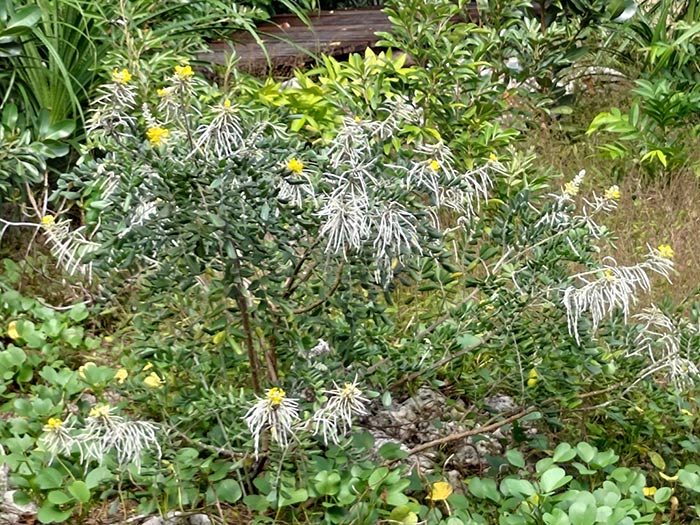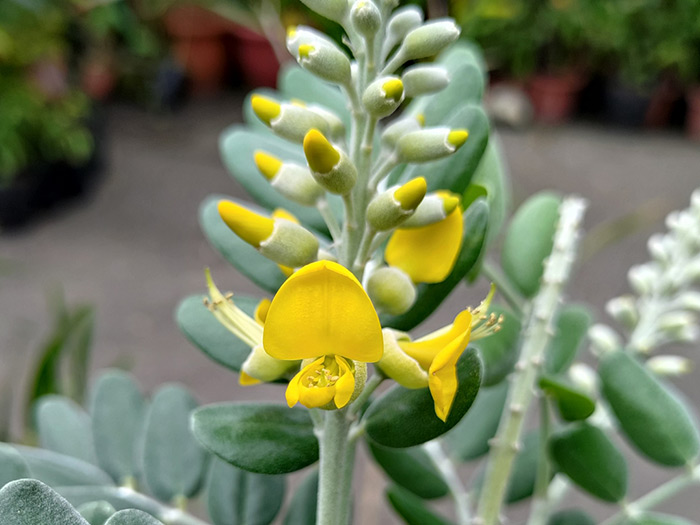Sophora tomentosa
Along the southern coastline, eastern reef cliffs, and the offshore islands of Orchid Island and Ludao in Taiwan, you can often spot a plant covered in soft, fluffy fur—this is the downy sophora. This leguminous plant, with its distinctive appearance and flowers and fruits, demonstrates remarkable resilience in the harsh coastal environment, earning it popularity and widespread cultivation as an ornamental plant.
The most striking feature of the downy sophora is the dense layer of silvery-white or grayish-white downy hairs that cover its leaves and stems, giving it a soft and comfortable appearance. These hairs are believed to be a protective mechanism that helps the downy sophora adapt to strong sea winds and intense sunlight.
In addition to its fuzzy outer coat, the downy sophora blooms with clusters of vibrant yellow butterfly-shaped flowers during the spring and summer seasons. Against the backdrop of green leaves, these flowers stand out vividly. The clusters of yellow flowers sway gently in the breeze, attracting insects to visit the flowers and infusing vitality into the coastal ecosystem. After the flowering period, the downy sophora produces rosary-like pods. The unique shape of these fruits is also one of the characteristics used to identify the downy sophora. These pods, resembling strings of rosary, are initially green and turn brown when mature. Hanging from the branches, they also have a certain ornamental value.
The downy sophora has drought-resistant and salt-tolerant characteristics, making it ideal for growth in coastal areas. As a result, it has been introduced and cultivated in many regions as an ornamental plant to adorn gardens, parks, and coastal green spaces. Not only can it thrive in harsh environments, but its beautiful form also provides people with a pleasant visual experience.
The downy sophora is a plant distributed throughout the tropics, found in the Ryukyu Islands and Ogasawara Islands near Taiwan, as well as along the tropical coastlines and islands of Asia. It is cultivated in the Coral Atoll Area of the Botanical Garden.

